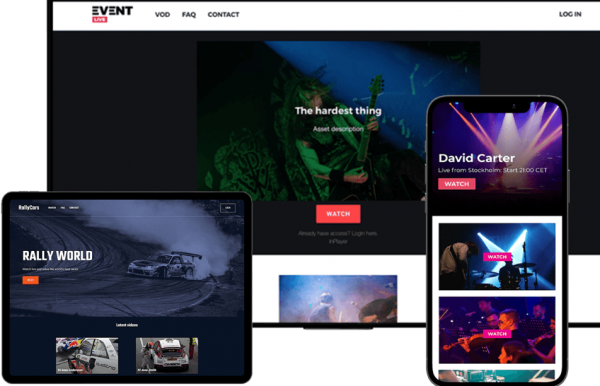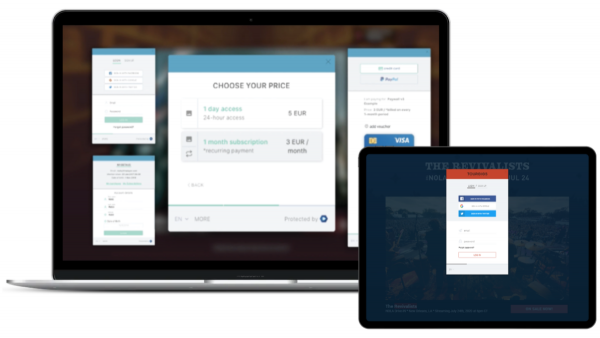Ask a marketer about the relevance of branding, and you’re likely to get a layered answer about voice and identity and the value of customers relating to a product or a company on a subconscious level. At the end of the day, they might say, the goal isn’t just for consumers to know your brand, but for them to connect to it – to feel it.
Kleenex and Coke are examples of branding done beautifully, the culmination of decades of efforts to transcend all competitors, making a brand name synonymous with a product type – including any and all versions of that product. (Think about it: No one asks you to pass them a “tissue.”) Branding, however, isn’t just about achieving ubiquitous consumer recognition. The objective is for an audience to implicitly understand what it is your company offers and the value it brings.

In the technology space, that means solving a problem. Every tech startup was essentially established to become a problem solver, including SaaS companies. Slack, for instance, was created to improve inter-office and project-based communications. Although it wasn’t the first or last app of its kind, “Slack” became a sort of shorthand among office professionals because it was widely considered the simplest, most intuitive and most responsive to customer needs among its competitors.
Slack may not have achieved quite the gold-standard one-of-one status enjoyed by, say, Uber or Peloton in the tech space. But the strength of its value proposition became baked into the Slack name for a specific audience. At a certain point of market penetration, consumers who rely on SaaS, whether they had ever actually used the Slack program, instantly understood what it was and why it was relevant. That is the power of branding.

InPlayer can help brands of all sizes cultivate and distribute their message through streaming video. Our all-in-one platform helps boost brand loyalty, generate new customers and provide a value add to existing partners.
And it’s doubly important for SaaS companies. Although it may be easier to stand out in a relatively new space, and to possibly achieve that vaunted one-of-one status, there is more pressure to get there. Being first is significant, but in a constantly evolving corner of the tech industry, establishing your brand’s overarching reliability and expertise actually wins the race.
Moreover, there is the challenge of cloud-based apps being literally nebulous in nature. Explaining what a particular on-demand software does without having to explain it is no small task. With strong branding, though, a SaaS company can create a built-in association with its service – think of it as a sensory download – that compels a target consumer to understand, value and seek out that offering.
By showcasing how it solves a specific tech problem, then packaging that solution with intelligent, artful branding, a SaaS company creates a bridge for consumers. And when that group begins referring to the brand rather than the type of service, you’ll know your audience has arrived at the destination.
Ask a marketer about the relevance of branding, and you’re likely to get a layered answer about voice and identity and the value of customers relating to a product or a company on a subconscious level. At the end of the day, they might say, the goal isn’t just for consumers to know your brand, but for them to connect to it – to feel it.
Kleenex and Coke are examples of branding done beautifully, the culmination of decades of efforts to transcend all competitors, making a brand name synonymous with a product type – including any and all versions of that product. (Think about it: No one asks you to pass them a “tissue.”) Branding, however, isn’t just about achieving ubiquitous consumer recognition. The objective is for an audience to implicitly understand what it is your company offers and the value it brings.

In the technology space, that means solving a problem. Every tech startup was essentially established to become a problem solver, including SaaS companies. Slack, for instance, was created to improve inter-office and project-based communications. Although it wasn’t the first or last app of its kind, “Slack” became a sort of shorthand among office professionals because it was widely considered the simplest, most intuitive and most responsive to customer needs among its competitors.
Slack may not have achieved quite the gold-standard one-of-one status enjoyed by, say, Uber or Peloton in the tech space. But the strength of its value proposition became baked into the Slack name for a specific audience. At a certain point of market penetration, consumers who rely on SaaS, whether they had ever actually used the Slack program, instantly understood what it was and why it was relevant. That is the power of branding.

InPlayer can help brands of all sizes cultivate and distribute their message through streaming video. Our all-in-one platform helps boost brand loyalty, generate new customers and provide a value add to existing partners.
And it’s doubly important for SaaS companies. Although it may be easier to stand out in a relatively new space, and to possibly achieve that vaunted one-of-one status, there is more pressure to get there. Being first is significant, but in a constantly evolving corner of the tech industry, establishing your brand’s overarching reliability and expertise actually wins the race.
Moreover, there is the challenge of cloud-based apps being literally nebulous in nature. Explaining what a particular on-demand software does without having to explain it is no small task. With strong branding, though, a SaaS company can create a built-in association with its service – think of it as a sensory download – that compels a target consumer to understand, value and seek out that offering.
By showcasing how it solves a specific tech problem, then packaging that solution with intelligent, artful branding, a SaaS company creates a bridge for consumers. And when that group begins referring to the brand rather than the type of service, you’ll know your audience has arrived at the destination.
As viewers continue to migrate in droves from terrestrial television and cable packages to over-the-top streaming providers, sports leagues and organizations can’t help but take notice. As far back as…
Bands and musicians have it tougher than ever. Building a following, serving the interests of fans and making a living (or even simply paying for expenses) playing music was a…
Patreon, Substack and other content creation membership platforms are all the rage right now – and with good reason. They can help a writer, artist or influencer not only build…